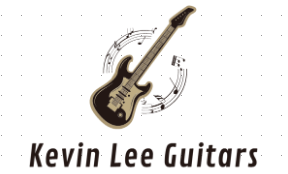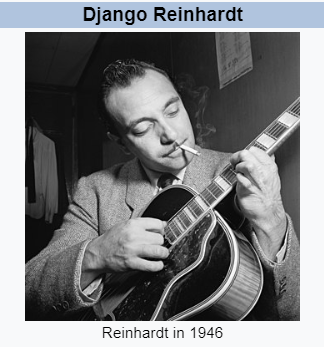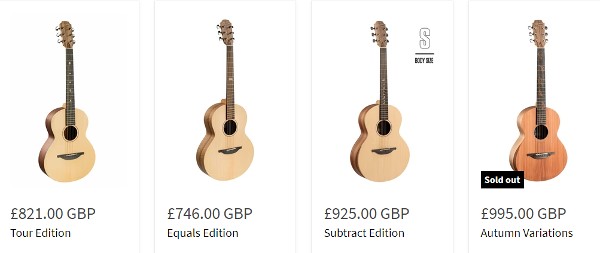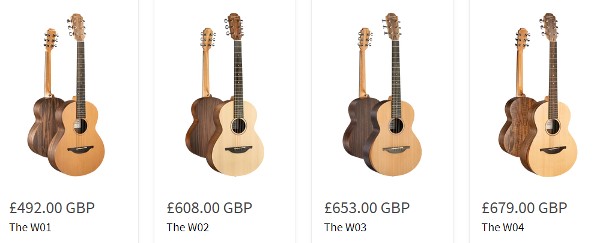Django Reinhardt, a legendary figure in the world of music, is celebrated for pioneering a unique style known as “Gypsy jazz” or “jazz manouche.” His musical style is a fascinating fusion of Gypsy (Romani) musical traditions with American jazz, creating a genre that has influenced countless musicians and remains vibrant to this day.
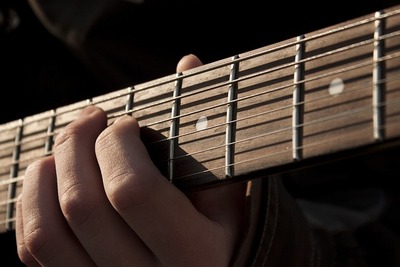
Gypsy Roots and Early Influences
Django Reinhardt was born in 1910 into a Romani family in Belgium. The Romani people have a rich musical heritage, characterized by its emotive melodies, intricate rhythms, and the extensive use of string instruments, particularly the guitar and violin. This cultural backdrop played a crucial role in shaping Django’s musical identity. From a young age, Django was exposed to traditional Gypsy music, which laid the foundation for his later innovations.
Introduction to American Jazz
In the 1920s and 1930s, American jazz was making its way across the Atlantic, captivating European audiences with its syncopated rhythms, improvisational nature, and vibrant energy. Django was particularly drawn to the works of jazz legends like Louis Armstrong and Duke Ellington. The influence of American jazz was profound, providing Django with new harmonic and rhythmic possibilities that he seamlessly integrated with his Gypsy roots.
The Birth of Gypsy Jazz
Django’s groundbreaking style, Gypsy jazz, emerged as a distinctive genre in the early 1930s. This style is characterized by a combination of Gypsy musical elements and jazz techniques. Here are some key features that define Gypsy jazz:
Instrumentation: The typical Gypsy jazz ensemble, or “hot club,” often includes one or more acoustic guitars, a violin, a double bass, and sometimes a clarinet or accordion. The rhythm section usually features a technique called “la pompe,” which provides a steady, percussive rhythm similar to a snare drum in swing jazz.
Improvisation: Like American jazz, Gypsy jazz places a strong emphasis on improvisation. Django’s solos were known for their spontaneity, creativity, and technical brilliance. His ability to create intricate melodic lines in real-time showcased his deep understanding of harmony and melody.
Rhythmic Complexity: The rhythmic structure of Gypsy jazz is both driving and intricate. The use of “la pompe” rhythm provides a fast-paced, swinging beat that underpins the soloist’s improvisations. This rhythm, combined with the syncopated phrasing borrowed from American jazz, gives Gypsy jazz its unique, infectious energy.
Melodic and Harmonic Elements: Gypsy jazz melodies often incorporate elements from traditional Gypsy music, such as minor scales, chromatic runs, and expressive phrasing. Harmonically, the style blends the rich, chordal textures of Gypsy music with the sophisticated harmonic progressions of jazz.
The Quintette du Hot Club de France
In 1934, Django formed the Quintette du Hot Club de France with violinist Stéphane Grappelli. This ensemble became one of the most celebrated groups in jazz history, pioneering the Gypsy jazz style and captivating audiences with their dynamic performances. The interplay between Django’s guitar and Grappelli’s violin created a vibrant and fluid musical conversation, setting a high standard for Gypsy jazz ensembles.
Notable Compositions and Legacy
Django Reinhardt’s compositions are central to the Gypsy jazz repertoire. Songs like “Minor Swing,” “Nuages,” and “Djangology” are considered classics and continue to be performed by musicians worldwide. These compositions exemplify Django’s ability to blend the soulful melodies of Gypsy music with the harmonic sophistication and improvisational flair of jazz.
Influence and Evolution
Django Reinhardt‘s influence extends far beyond the realm of Gypsy jazz. His innovative techniques and musical ideas have inspired musicians across various genres, from jazz and blues to rock and classical. Notable guitarists such as B.B. King, Chet Atkins, and even modern players like John Jorgenson and Biréli Lagrène have cited Django as a significant influence on their playing.
The Gypsy jazz tradition continues to evolve, with contemporary musicians exploring new directions while honoring Django’s legacy. Festivals dedicated to Gypsy jazz, such as the Django Reinhardt Festival in Samois-sur-Seine, attract audiences and performers from around the world, celebrating the enduring appeal of this unique musical style.
Conclusion
Django Reinhardt’s style of music, known as Gypsy jazz, is a vibrant fusion of Gypsy musical traditions and American jazz. Characterized by its distinctive instrumentation, improvisational brilliance, rhythmic complexity, and emotive melodies, Gypsy jazz stands as a testament to Django’s genius and innovation. His contributions to music have left an indelible mark, inspiring generations of musicians and ensuring that the spirit of Gypsy jazz continues to thrive. Django’s legacy is a reminder of the power of cultural fusion and the timeless appeal of music that transcends boundaries.
